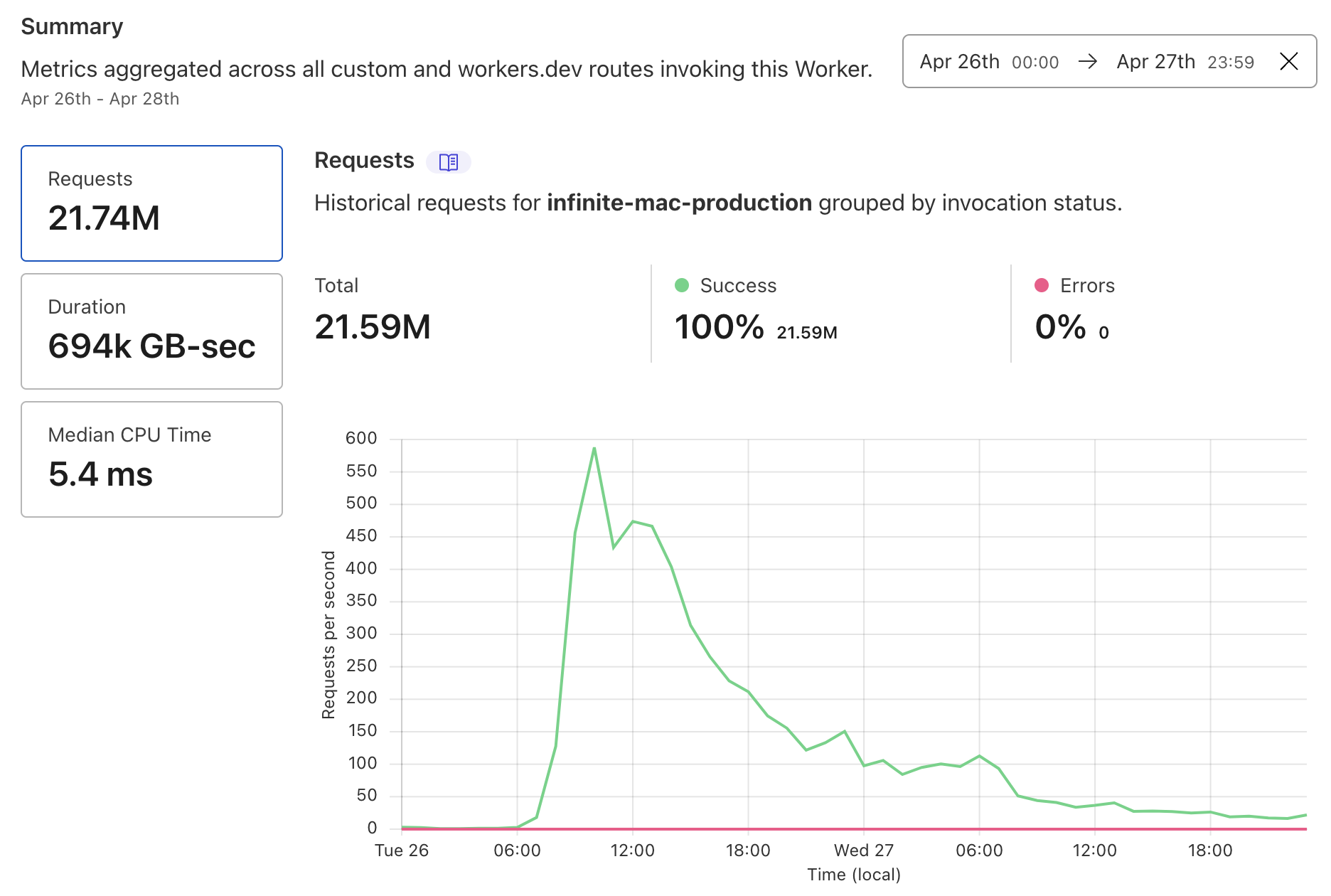Infinite Mac 7.5 Weeks Later #
Infinite Mac has been quite a whirlwind. I wasn’t sure if it would reach the Mac (or retro computing) community, but it did, and went beyond that too, including to Ars Technica and Hacker News (twice). The most gratifying thing was seeing (and in some cases hearing from) people who were active Mac developers and community members in the 90s, including Andrew Welch, the author of Shufflepuck Cafe, Jorg Brown, James Thompson, and others. It was also great to see people actually using the apps to make things — there’s more to old OSes than just playing games (though those are great too).
 Cloudflare Workers are pretty nice for handling traffic spikes
Cloudflare Workers are pretty nice for handling traffic spikes
Besides the ego boost, I also got a lot of feedback, and have have made a bunch of changes since then. In addition to adding a few more things to the library and making bug fixes, the notable changes are:
- I added kanjitalk7.app as a companion site to macos8.app and system7.app. Besides making a new base system image, I also changed how the library is stored, keeping it in a separate disk from the OS. This makes uploading and hosting of alternate OSes much easier, since the same library disk image can be used, instead of duplicating ~1GB of data. I probably could have leaned in more on the content hashing by forcibly aligning files to chunk offsets, but that would have been brittle.
- The HFS file system that I was generating had some malformed data structures which became more apparent as the number of files grew (and various B*-tree structures overflowed). After spending a lot of quality time with Inside Macintosh: Files I was able to make two fixes to the
machslibrary and get things working. - The file system also lacked a populated desktop database, which mean that double-clicking on files from other apps did not consistently work. Unfortunately that file format was never reverse engineered, so the easiest way to get it created was to temporarily boot the image, force a desktop DB rebuild, and then persist the results of that.
- A lot of CD-ROM games are archived as disk images (especially in the Toast format), so I special-cased the dragging in of those files to instead directly mount them as disks. This unblocks playing of games like Myst.
At some point I was reminded of GUI Central, which was my pre-Mscape Software hobby project (it has a brief mention in my first post). It was a site cataloging Mac customizations (think Kaleidoscope schemes, desktop patterns, etc.). Its main gimmick was that it replicated the 1997-era Mac OS UI in the browser (complete with theme/scheme changing). I have in some ways come full circle.
1 Comment
Post a Comment